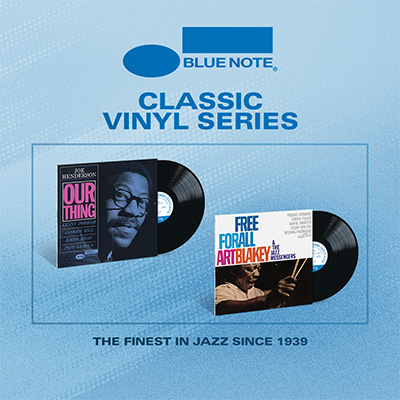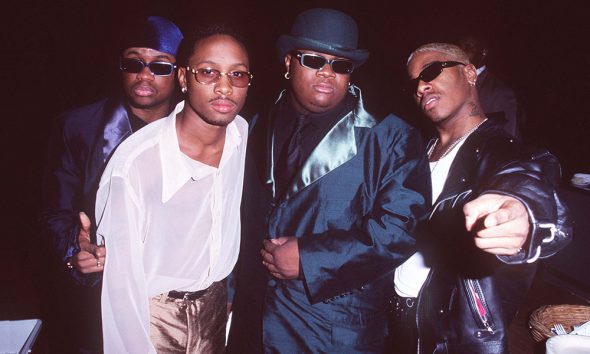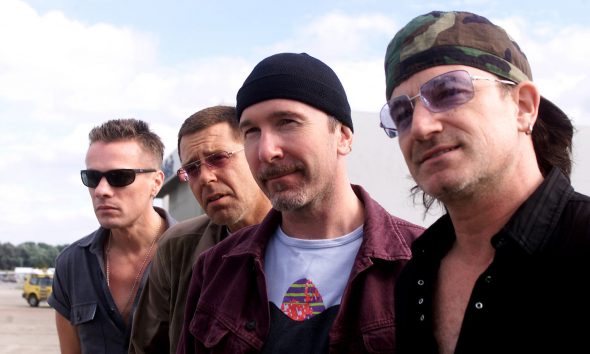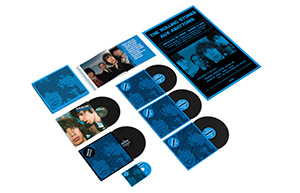Best Count Basie Songs: 20 Jazz Essentials
For the legendary pianist-bandleader and his incredible orchestra, the bottom line was swinging hard and making you smile.
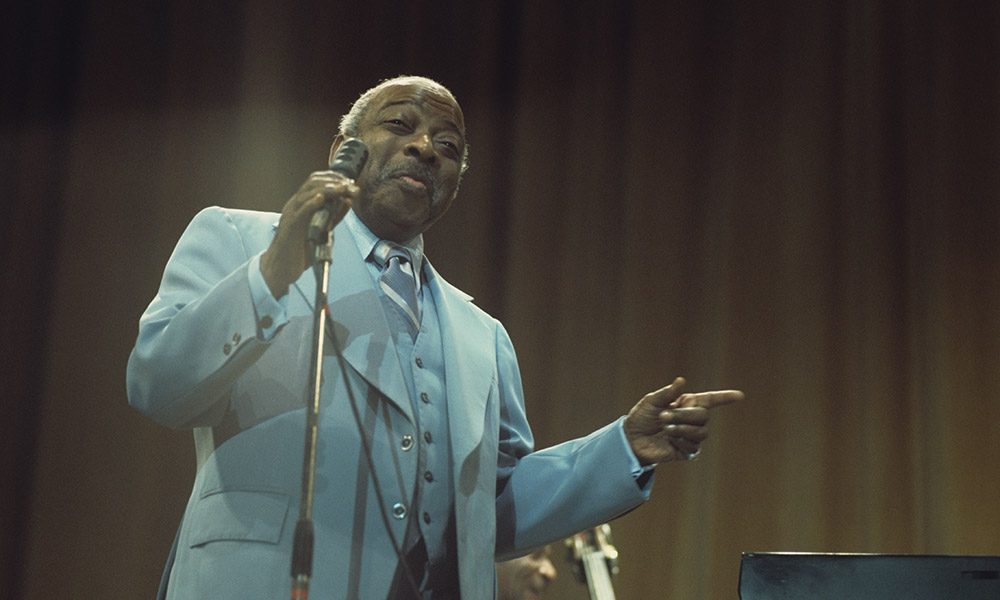
When asked how to explain the pianist and bandleader Count Basie for the average listener, Butch Miles finds it difficult to be dispassionate. As a teenager, he first saw the Count Basie Orchestra perform songs at a jazz festival in Virginia Beach. “Marshal Royal was on lead alto. The two Franks were in the reed section. Sonny Payne was on drums,” the 76-year-old drummer recalls with a hint of awe. “It was something for a 16-year-old kid to sit right in front of the band and hear that. And that was all it took. I was gone, and I’ve been gone ever since that night.”
By the mid-’70s, Miles would join the band himself, part of an ever-growing list of talented musicians that played bluesy, swinging, and hotter than hot. The Count Basie Orchestra, simply, has the ineffable ability to make your day better. “His music makes you want to dance,” says Scotty Barnhart, who has led the Count Basie Orchestra since 2013. “It makes you want to tap your foot and snap your fingers. When you leave a Basie concert, you’re supposed to feel better than you did when you first walked in there… That’s what Mr. Basie’s goal was.”
William James Basie was born in Red Bank, New Jersey, in 1904. At first, he wanted to be a drummer. He also badly wanted to get out of Red Bank, and he contemplated joining the circus to do so. “I always used to go down there and frustrate the hell out of myself dreaming about leaving with them,” Basie wrote in his 1986 autobiography Good Morning Blues. To get closer to show business, he dropped out of middle school and performed menial tasks at a movie theater. After watching Sonny Greer play, Basie gave up his dreams of drumming. “Everybody knew he was the champ,” Basie wrote of the percussionist who would go on to play in Duke Ellington’s band. “I could see that playing drums was not going to be my gig.”
Listen to the best Count Basie songs on Apple Music and Spotify.
Basie turned his attention to the piano, absorbing the stride-piano style of Fats Waller, and eventually hit the road with vaudeville acts. In 1928, he joined Walter Page’s Blue Devils, and the following year, he joined Bennie Moten’s band. Many of the members, like Lester “Prez” Young, drifted into Basie’s orbit around the time of Moten’s death in 1935. Gradually, member by member, the Count Basie Orchestra was born, and almost a century later, the group is still humming along as one of jazz’s most prestigious repertory orchestras.
For the uninitiated who’d like to get into this towering figure of big-band, here are 20 essential songs by the Count Basie Orchestra – with and without Count.
The Old Testament Band
Between 1935 and 1955, Count Basie led two versions of the Orchestra, which critics nicknamed the Old Testament and New Testament bands. The Old Testament band launched the careers of everyone from Prez to singer Jimmy Rushing to drummer Jo Jones.
During one radio session, a tossed-off 12-bar blues became their theme song. “One night, we were on the air, and we had about ten more minutes to go, and the announcer asked what we were going to do,” Basie wrote in Good Morning Blues. Basie began vamping; the announcer asked what the title was. The musicians’ working title of “Blue Balls” wouldn’t fly, and Basie needed a new title, fast. So he looked at the clock, and he found it: “One O’Clock Jump.”
“Avenue C,” which trumpeter Buck Clayton wrote and arranged, is another terrific entryway into the Old Testament band. “Buck Clayton was the only guy in the band who could score – could write it all down,” says Doug Lawrence, who is currently the Orchestra’s featured tenor soloist.
Because of Clayton’s ability, for the band’s first couple of years, “Buck told me everybody made a dollar a night and seven bucks a week, and everyone would take 25 cents out of their pay and give it to Buck,” he continues with a laugh. “He was the highest-paid guy in the band!”
Other go-to’s from this epoch include guitarist Eddie Durham’s “Jumpin’ at the Woodside” and “Time Out,” Prez’s “Tickle Toe,” and Durham’s and Rushing’s “Good Morning Blues.” “Even though they have Basie’s name as the composer, those were riffs that Prez and Buck were making up,” Lawrence says of many of the Old Testament tunes. “Lester never got credit for any of those tunes, and he didn’t care.”
“‘Good Morning Blues’ is significant [because] it has a certain kind of poetry and uniqueness,” explains tenor saxophonist, conductor, and jazz historian Loren Schoenberg. “The Old Testament band was so groundbreaking because it had this drive. I’ve heard people describe it as a locomotive going down the railroad tracks. It was that steady drive of that rhythm section – piano, bass, drums, and Freddie Green’s guitar. It had this steady pulse, and the swing was so hard it was better than anything else that was being produced at the time.”
The New Testament Band
Count Basie pulled the plug on the OId Testament band in 1949 as the swing era declined and flirted with eight-piece, seven-piece, and six-piece groups – until the singer and big-band leader Billy Eckstine told him to cut it out. “Get your goddamn big band back together,” Eckstine told Basie, according to Good Morning Blues. “Man, you look funny up there… This is small garbage for you, Basie.”
Basie took his advice and formed the New Testament Band, which was heavier and richer than the Old while reflecting the harmonic innovations of the bebop movement. “In [1952], when you get to the New Testament band, that pulse is still there,” Lawrence explains. “It’s just that the arrangements, harmonically, are of that era – the bebop era. Then, you start getting arrangers who were arranging harmonically different than these earlier recordings.”
When alto saxophonist Charlie Parker and trumpeter Dizzy Gillespie came along, they cranked up danceable swing to whiplash tempos. They also braided it with harmonic beauty influenced by classical music, a development that left most swing bands in the dust. Count Basie’s group was an exception, largely because Basie welcomed musicians versed in bebop, like tenor saxophonist Frank Foster and trumpeter Thad Jones.
Foster’s “Shiny Stockings” and the Orchestra’s take on Vernon Duke’s standard “April in Paris” show how they grew more sonorous and resonant without sacrificing that crucial pulse. Barnhart calls the former “another basic staple” of the group; the latter, which is the most famous version of the tune, was inducted into the Grammy Hall of Fame in 1985.
“If I had to name one Count Basie Orchestra album for a beginner to get into, it’d be Chairman of the Board,” Barnhart says. That 1959 album represents a sweet spot in Basie’s discography. The production’s excellent, the band swings hard, and you can venture forward or backward from there as per your taste. From that album, check out the exuberant “Blues in Hoss’ Flat” and “Kansas City Shout.”
After that, find the album with the hilarious and brazen mushroom-cloud cover – some call it The Atomic Mr. Basie, others call it E=MC2 – and crank up “The Kid From Red Bank,” “Whirly Bird,” and “Li’l Darlin’.” “That’s probably the pivotal album [in defining] the sound of the New Testament band,” claims Marshall McDonald, who held down the lead alto chair in the Count Basie Orchestra and connected the author of this article with many of the interviewees. In Good Morning Blues, Basie called the luxurious ballad “Li’l Darlin’” “one of our standards.”
Collaborations With Vocalists
Count Basie’s discography is full of songs with premier vocalists like Sarah Vaughan, Ella Fitzgerald, Frank Sinatra, and Tony Bennett, all who fit seamlessly into the Orchestra. To understand the vocal element in Count’s work, however, “Everyday I Have the Blues,” featuring Joe Williams, is Exhibit A. While a song like “Fly Me to the Moon” with Frank Sinatra might be more recognizable, Williams was in the Count Basie band. “The hits he had with the band redounded to Basie’s fame and bottom line,” Schoenberg explains. “The other things were, you know, a tour with Sarah Vaughn, a tour with Frank Sinatra.”
That said, if the material with vocalists compels you to dig deeper, don’t hesitate to check out albums like 1959’s Strike Up the Band (with Tony Bennett), 1961’s Count Basie/Sarah Vaughan, and 1963’s Ella and Basie!.
The 60s, 70s, and 80s
While the Old and New Testament bands encompass the lion’s share of Count Basie’s classic songs, the ensuing two decades contain must-hear cuts, too.
Chief among them: the title track to 1963’s Li’l Ol’ Groovemaker… Basie!, an album which Quincy Jones composed and arranged. Basie’s and Jones’s creative relationship was artistically and commercially fertile; Basie won a Grammy that year for his arrangement of “I Can’t Stop Loving You.” “Blues for Stephanie” from 1980’s On the Road remains a mainstay for the orchestra due to its melodic vibrancy and ample space for soloing.
While you’re at it, cue up the title track to 1981’s Warm Breeze. “That’s Sammy Nestico. That’s a beautiful tune,” Lawrence says. “It’s classic Nestico, and he had a lot to do with what we were doing in the 80s.” A veteran composer and arranger known for film and TV, Nestico shepherded the Count Basie Orchestra through albums like 1982’s Farmer’s Market Barbecue and 1983’s 88 Basie Street.
The Orchestra Post-Basie
Since Count Basie’s passing in 1984, a succession of bandleaders has taken his place. “Thad [Jones] took over the band for a while before he became so sick,” Miles says. “Then, Frank [Foster] took over, bless his heart. Then, Grover [Mitchell] took over. Then, Bill Hughes took over, then Scotty [Barnhart] took over.”
If you want to check out the Orchestra post-Basie, there are a couple of great starting points. Seek out “A Foggy Day” from 1986’s Long Live the Chief, which features vocalist Carmen Bradford, and “Katherine the Great,” which Frank Foster wrote for 1989’s The Legend, The Legacy. Also, listen to Thad Jones’s “From One to Another” from 2018’s All About That Basie, also featuring Bradford. (The rest of the album features luminaries like Stevie Wonder, Kurt Elling, and Joey DeFrancesco.)
Make no mistake, though: No matter which era of the Count Basie Orchestra you dip into – or even whether it features Basie – you’re going to hear musicians of the highest caliber. “I think every musician that ever played in the Basie band was recommended by another musician,” explains James Leary, who played in the Orchestra during Basie’s final years. “You didn’t audition for the Basie band. To get on the Basie bandstand, you were recommended by another musician.”
Indeed, to hear past and present members of the Orchestra tell it, what separates Basie’s band from the rest – Glenn Miller’s, Benny Goodman’s, even Duke Ellington’s – is their uniquely familial bond. “There are so many great musicians where they’re amazing technicians, and their organizations run like watches,” says Dennis Mackrel, who led the band from 2010 to 2013. “But they’re miserable to be around, or they’re so stressed out they can’t wait to be out of it. They’re happy they were part of a great organization, but they never want to go back. With Basie, he recognized that it was important to have fun. I don’t know any musicians who have bad things to say about him.”
Miles remembers how the Orchestra’s closeness buoyed them on both good nights and rough ones: “There were nights when the band had been on the road all day,” he says. “Maybe we didn’t even have a chance to get to our hotel yet. We hadn’t shaved. We were changing clothes on the bus. We didn’t get anything to eat. We showed up to do the concert about 40 minutes before we were supposed to and got off the bus grumbling, tired and beat up.” But then, “We went on and played our asses off.”

